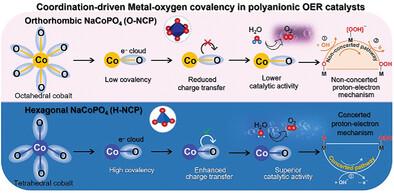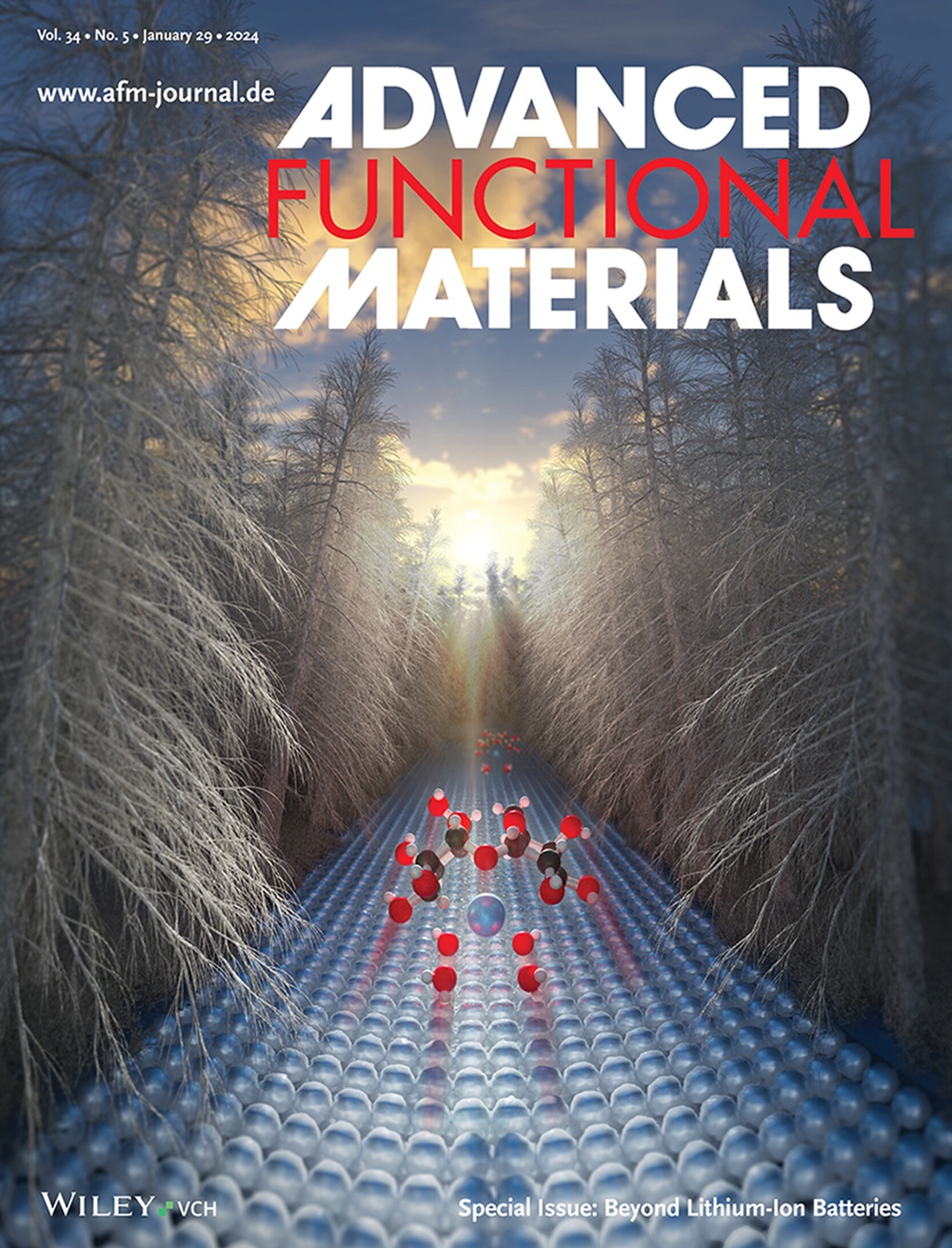Modulating Coordination-Driven Metal-Oxygen Interaction Triggers Oxygen Evolution in Polymorphic and High-Entropy Phosphate Electrocatalyst
IF 18.5
1区 材料科学
Q1 CHEMISTRY, MULTIDISCIPLINARY
引用次数: 0
Abstract
Engineering metal-oxygen (M‒O) interactions for catalyzing oxygen evolution reaction (OER) by tuning the coordination geometry of metal sites is crucial for improving catalytic performance, which remains unexplored, especially in structurally diverse phosphate-based catalysts. Herein, two NaCoPO4 (NCP) polymorphs with distinct metal coordinations: orthorhombic-Pnma (CoO6) and hexagonal-P65 (CoO4) denoted as O-NCP and H-NCP, respectively are synthesized through unique quenching-based synthesis, to investigate the impact of coordination geometry on M‒O covalency and OER performance. The CoO4 (H-NCP) polymorph delivered superior OER activity with low overpotential at 10 mA cm−2 (η10 = 303 mV) and long-term stability than CoO6-based O-NCP. Spectroscopic and computational studies linked the superior activity of CoO4 to higher Co‒O covalency, enhanced metal electronic states near the Fermi level, and improved electrochemical reconstruction. Further, M‒O covalency regulated OER mechanism, where high-covalent CoO4 follows conventional concerted proton-electron transfer pathway, while CoO6 entails a non-concerted pathway, where the lattice oxygen participation remains unfavorable due to downshifted O 2p band center. Further, OER-active tetrahedral metal is demonstrated in a high-entropy catalyst requiring lower η10 of ≈284 mV. This study unlocks a unique strategy for designing next-generation OER catalysts with superior activity and durability, harnessing the interplay between metal coordination and metal-oxygen covalency.

调节配位驱动的金属-氧相互作用引发多晶态和高熵磷酸盐电催化剂中的氧演化
通过调整金属位点的配位几何来设计催化氧进化反应(OER)的金属-氧(M-O)相互作用对于提高催化性能至关重要,但这一问题仍有待探索,尤其是在结构多样化的磷酸盐基催化剂中。本文通过独特的淬火合成法合成了两种具有不同金属配位的 NaCoPO4(NCP)多晶体:正交-Pnma(CoOO6)和六方-P65(CoO4),分别称为 O-NCP 和 H-NCP,以研究配位几何对 M-O 共价性和 OER 性能的影响。与基于 CoO6 的 O-NCP 相比,CoO4(H-NCP)多晶体在 10 mA cm-2 时具有较低的过电位(η10 = 303 mV)和长期稳定性,具有更高的 OER 活性。光谱和计算研究表明,CoO4 的卓越活性与 Co-O 共价性更高,费米级附近的金属电子态增强以及电化学重构改善有关。此外,M-O 共价调节了 OER 机制,其中高共价 CoO4 遵循传统的协同质子-电子转移途径,而 CoO6 则采用非协同途径,由于 O 2p 带中心下移,晶格氧的参与仍然不利。此外,OER 活性四面体金属在高熵催化剂中得到了证实,需要较低的η10 ≈284 mV。这项研究利用金属配位和金属氧共价之间的相互作用,为设计具有卓越活性和耐久性的下一代 OER 催化剂提供了一种独特的策略。
本文章由计算机程序翻译,如有差异,请以英文原文为准。
求助全文
约1分钟内获得全文
求助全文
来源期刊

Advanced Functional Materials
工程技术-材料科学:综合
CiteScore
29.50
自引率
4.20%
发文量
2086
审稿时长
2.1 months
期刊介绍:
Firmly established as a top-tier materials science journal, Advanced Functional Materials reports breakthrough research in all aspects of materials science, including nanotechnology, chemistry, physics, and biology every week.
Advanced Functional Materials is known for its rapid and fair peer review, quality content, and high impact, making it the first choice of the international materials science community.
 求助内容:
求助内容: 应助结果提醒方式:
应助结果提醒方式:


